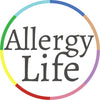Hypersensitivity types may be- Type I Allergy or Type IV Allergy
Immune reactions may be from- IgE or T Cells
Reactions may occur in- Minutes to over 24 Hours
Pet/Animal Allergies are quite common, especially from Dogs and Cats.
A reaction occurs when contact is made from the dander, saliva or urine/feces, which can lead to unpleasant symptoms such as allergic rhinitis or even aggravate asthma symptoms (for people with pre-existing conditions).
From seeking the most hypoallergenic pets, to finding a way to live with pets through using products that clean/ reduce the allergens, to avoiding Animals in nature, Pet/Animal allergies are an allergy group that has some of the highest alternative measures sought, so people can continue to live with their beloved companions or travel safely to new places.

HOW THE ALLERGENS BUILD UP
There are three main causes of Pet allergies-
- PET/ANIMAL DANDER- This consists of coming in contact with proteins from microscopic flakes (dandruff-like) of skin shed by pets/animals.
- PET/ANIMAL SALIVA- This consists of coming in contact with the proteins from the saliva of pets/animals.
- PET/ANIMAL URINE/FECES- This consists of coming in contact with the proteins from the urine/feces of pets/animals.
WHERE THE ALLERGENS COLLECT
The dander, saliva and urine/feces can collect on furniture and other surfaces at home, the workplace, school, etc. This includes on other people, other pets/animals and on any items that you may come in contact with (such as food or toys).
People with pet/animal allergies have to also look out for air allergens in public spaces such as parks, shopping centres, zoos, etc.
SYMPTOMS
Some of the symptoms may be characterised by:
- Sneezing
- Itchy, watery eyes
- Congestion
- Coughing
- Wheezing
- Redness
- Runny, itchy, stuffy nose
- Asthma aggravation
- ANAPHYLAXIS
The validity and severity of these symptoms are dependent on the individual and the level of exposure, as determined by a qualified health care provider.
TREATMENT
If you experience or are in the presence of someone who encounters a serious reaction (this may include difficulty breathing, wheezing, throat tightening, swelling, collapse, etc), follow their action plan or emergency instructions and call or have someone call Triple Zero (000) immediately.
Adrenaline (Epinephrine) is the first-line treatment for Anaphylaxis. After administering Adrenaline (Epinephrine), seek emergency medical attention by calling Triple Zero (000) for an ambulance.
If you are unsure what to do, call Triple Zero (000).
If you or someone you know is suspected of having an allergy, it’s important to discuss diagnosis, symptoms and treatment with a qualified health care provider to understand how to manage individual allergies and also to set up an Allergy Action Plan in the case of a reaction.
Always present your Allergy Card, Medical Alert Bracelet, Action Plan or Necklace to ensure health care providers, family members, friends, colleagues and others are aware of your Allergies.
TESTING
A skin prick test or a blood test may be used to test for a Pet/Animal Allergy.
LABELLING
Some labels or terms you may come across on products that are Pet/Animal Allergy friendly:
"Hypoallergenic" in their branding.

RANDOM PET/ANIMAL FACT
Some of the first pets recorded to be domesticated by humans were Wolves. Planning to get a wolf as a pet anytime soon?
The information provided on Allergy Life Australia is to generally educate and inform you about living with allergies, intolerances and conditions, and is not intended as medical instruction or as a substitute for diagnosis, examination and advice by a qualified health care provider.




